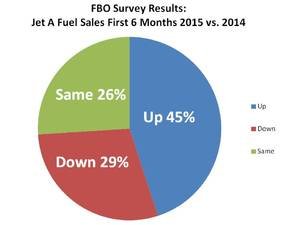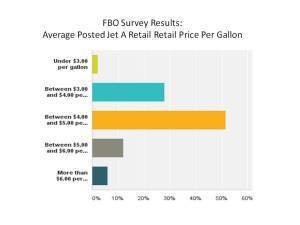“You hit home runs not by chance but by preparation.” – Roger Maris
 Your fuel supply agreement is one of the most important contracts in operating a successful FBO. Your lease with the airport authority is what puts you in business, but your fuel supply agreement is what keeps you in business.
Your fuel supply agreement is one of the most important contracts in operating a successful FBO. Your lease with the airport authority is what puts you in business, but your fuel supply agreement is what keeps you in business.
Because your fuel supplier agreement regularly comes up for renewal, do not just go out and get a “free” dinner with a fuel supplier and sign on the dotted line! If you want to know whether or not you have a competitive agreement, you’ll need to prepare, do some research and maybe invite several suppliers to submit proposals. As Roger Maris said, preparation will help you hit that home run.
There is a lot more to a fuel supplier relationship than just purchasing fuel. You are dealing with substantial costs that affect operating expenses and have an impact on your:
- Cash flow
- Balance sheet
- And, most of all, the profitability of your business
Yes, profit is great. That’s why you are in business. Don’t forget your fuel supplier is in business to make a profit too. You need balance in your agreement to ensure a winning contract for both parties.
In our NATA FBO Success Seminars, we teach a course about negotiating a favorable fuel supplier agreement. In this course, we also discuss how and when to buy aviation fuel. Here is an overview of some of the elements to address in a fuel supply agreement.
Be Prepared with Platts Oil Price Data
First, of course: What is the fuel going to cost? In order to answer this question we need to understand how world fuel markets work.
No doubt you hear all the time on the news what the price of crude oil is doing. As you know, it has been all over the place but mostly up, up, up — with an occasional downward correction. The price of crude drives jet fuel prices, but it is also affected by supply and demand, speculators, inventory, etc. So how do all the world buyers keep track?
The Platts Oilgram Price Report published daily by McGraw-Hill includes the Platts Jet Fuel Index. The fuel price indices are published worldwide with nine regional segments in the United States alone. There are also indices for Europe, Middle East and the Far East.
For general aviation, each week, the daily U.S. Jet A index prices are averaged. The change in the average price for the week generally is posted on a Tuesday, and your Jet A fuel price changes are calculated by the change in the average change for the week. You may purchase a subscription to this information from McGraw-Hill. (It is expensive.) A free source of Jet A pricing information and changes is the IATA web site, which maintains the Jet Fuel Price Monitor and Fuel Price Analysis.
Making the Numbers Work
Because jet fuel is priced based upon a Platts index, ask your potential supplier to quote a fuel price based upon a nearby index. For example, we can choose the Gulf Coast, New York, Los Angeles or another available index.
Given that the fuel supplier needs to make some money, it will quote a price based upon a Platts index, plus a differential (the supplier’s profit margin). Ask several suppliers to quote a price based on the same Platts fuel price index for a specific date, plus a differential. Now you can measure each quote on an apples-to-apples basis.
Say your business is doing $5 million per year in fuel sales, and you are paying anywhere from $125,000 to $185,000 per year in credit card fees that can range up to 4 percent or higher. How would you like to save $10,000, $20,000 or even $30,000 per year on these credit card expenses?
Believe it or not, you can realize this kind of savings when you negotiate your new fuel supplier agreement. Yes, you may negotiate the best arrangement for credit card fees paid vs. payment terms. We like to call this free money! This savings goes right down to your profit line.
In addition, did you know that until recently, you were paying on average $0.41 per transaction for each debit card transaction? This fee just dropped to $0.21 in July!
When you ask various suppliers for a fuel proposal, credit card fees and payment of due amounts are part of the competitive nature of your agreement. By getting better rates on your credit cards and educating your employees on the best card to use, you can save substantial money for this expense. Again, free money!
Creating Cash Flow
When you have to purchase a load of jet fuel, you either need to have cash in hand or, in short order, the cash to pay for the load. That’s $25,000 or more.
If you have collected your accounts receivable and reconciled your credit card payments, then you’re in pretty good shape. However, if it happens to be Friday, the payroll is due, and your insurance payment is due, then, all of sudden, you’re short on cash.
As part of your fuel supply agreement, you need to negotiate favorable credit terms. Of course you need to provide financial statements to support a credit line, which is no different than when you apply for credit from your local bank.
These are just a few of the terms that affect your profitability. You should also prepare to negotiate these other components that are part of a comprehensive fuel supply agreement:
- Marketing support
- Equipment leasing and maintenance
- Incentives to make a change in suppliers
- Pricing for 100LL fuel
- Transportation fees
- Contract fuel and other issues vital to your success
All these issues affect the cost and benefit to you and your fuel supplier. As the FBO owner, you should evaluate proposals from various suppliers to get the best agreement. Remember Roger Maris. Preparation is the name of the game when working toward a balanced fuel supply agreement.
If you would like more information or assistance in developing a favorable fuel supplier agreement, please let me know. In addition, the National Air Transportation Association (NATA) is a great resource. We will be covering this subject in detail at the next NATA FBO Success Seminar: Fuel Summit 2011, Nov. 8-10, Atlanta.
We would like to hear from you. Give us your comments. You can call me at 404-867-5518, email me at jenticknap@bellsouth.net, or go to our web site for more information: www.absggroup.com.
John Enticknap
John Enticknap founded Aviation Business Strategies Group in 2006 following a distinguished career in aviation fueling and FBO management, including as president of Mercury Air Centers. He is the author of 10 Steps to Building a Profitable FBO and developed NATA’s acclaimed FBO Success Seminar Series.










